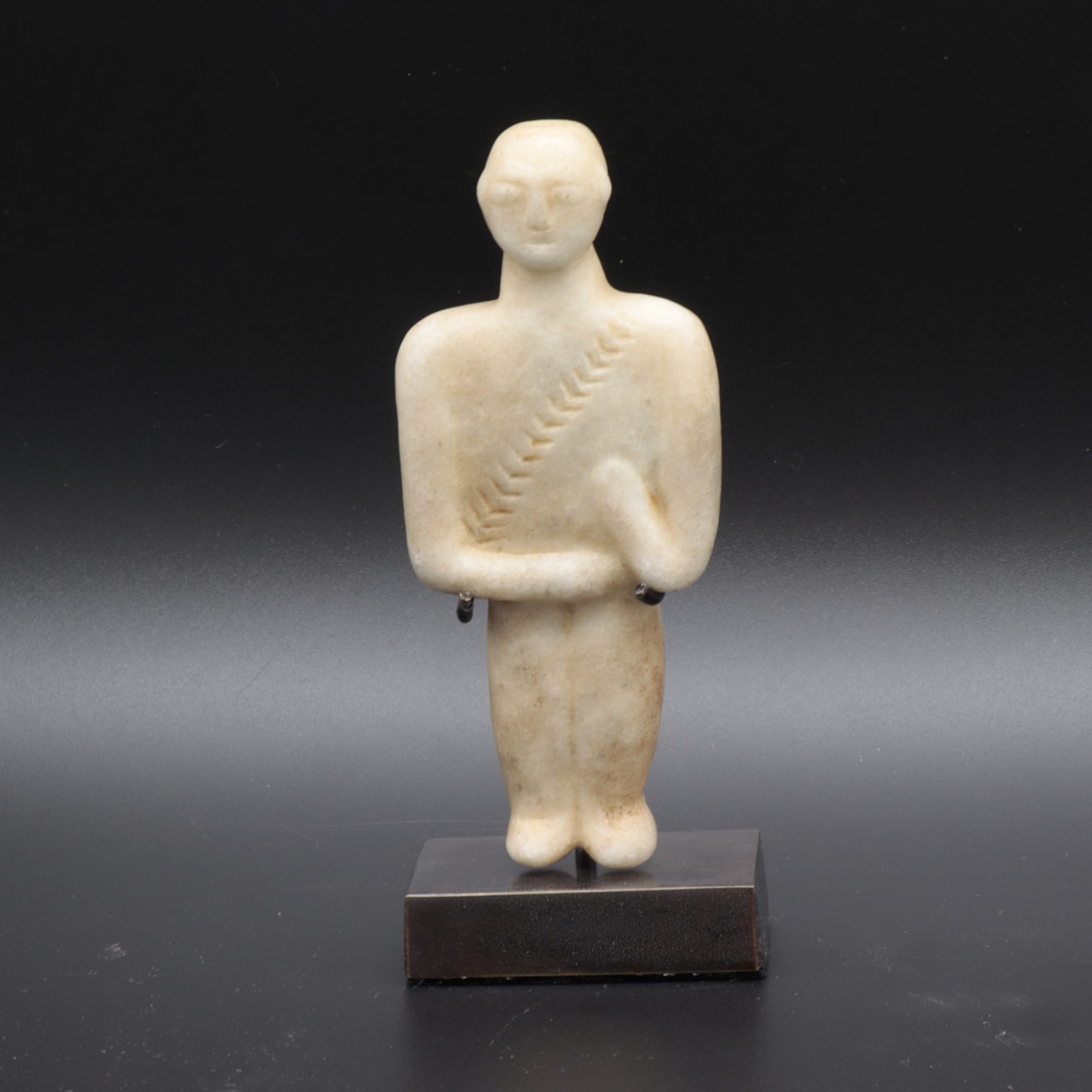Anatolian Marble IdoI, 2500 BCE - 1500 BCE
Marble
height 11 cm
height 4 3/8 in
height 4 3/8 in
LI.3272
An exceptionally rare and remarkably well preserved Anatolian fertility figure dating to the Neolithic period. A culture very much related to that of the Cyclades existed in the Levant during...
An exceptionally rare and remarkably well preserved Anatolian fertility figure dating to the Neolithic period.
A culture very much related to that of the Cyclades existed in the Levant during the later Neolithic period. A preference for highly schematic and reductive figurines is also very common to both. The fact that such figurines have been unearthed in urban surroundings and small domestic shrines suggests that they were used for daily worship purposes.
In the Levant, this style of figure continued, with regional variations, long after neighboring Mediterranean cultures adopted more naturalistic or elaborate styles. These sculptures represent some of the earliest attempts to represent human figures.
The present figurine has abstract iconographical characteristics, focussed on square shoulders and with the body diagonally crossed by chevrons.
The exceptional care needed to carve and smooth the stone during the Neolithic period suggests that this artefact was an elite possession, and that it probably had a non-secular function. Most early groups objectified animals, and then humans, as religious and ritual imagery, as it was these that were imbued with spiritual values, and were a more effective means of symbolizing qualities than abstract notions and concepts. What we know about society at the time suggests that there was a hierarchy that was only familiar with such otherwordly concepts at the highest level; we can therefore safely assume that thus piece was owned by, and used by, a high-ranking member of the society, and that s/he was probably involved in some ritual function within the society.
The appeal of this figure, along with its exceptional rarity, is in its quintessentially minimalistic character. This is an artefact almost 6000 years old and yet uniquely appealing to the contemporary eye and taste.
This is an artefact of truly outstanding museum quality, befitting the most distinguished collections and the most discerning collectors.
A culture very much related to that of the Cyclades existed in the Levant during the later Neolithic period. A preference for highly schematic and reductive figurines is also very common to both. The fact that such figurines have been unearthed in urban surroundings and small domestic shrines suggests that they were used for daily worship purposes.
In the Levant, this style of figure continued, with regional variations, long after neighboring Mediterranean cultures adopted more naturalistic or elaborate styles. These sculptures represent some of the earliest attempts to represent human figures.
The present figurine has abstract iconographical characteristics, focussed on square shoulders and with the body diagonally crossed by chevrons.
The exceptional care needed to carve and smooth the stone during the Neolithic period suggests that this artefact was an elite possession, and that it probably had a non-secular function. Most early groups objectified animals, and then humans, as religious and ritual imagery, as it was these that were imbued with spiritual values, and were a more effective means of symbolizing qualities than abstract notions and concepts. What we know about society at the time suggests that there was a hierarchy that was only familiar with such otherwordly concepts at the highest level; we can therefore safely assume that thus piece was owned by, and used by, a high-ranking member of the society, and that s/he was probably involved in some ritual function within the society.
The appeal of this figure, along with its exceptional rarity, is in its quintessentially minimalistic character. This is an artefact almost 6000 years old and yet uniquely appealing to the contemporary eye and taste.
This is an artefact of truly outstanding museum quality, befitting the most distinguished collections and the most discerning collectors.
